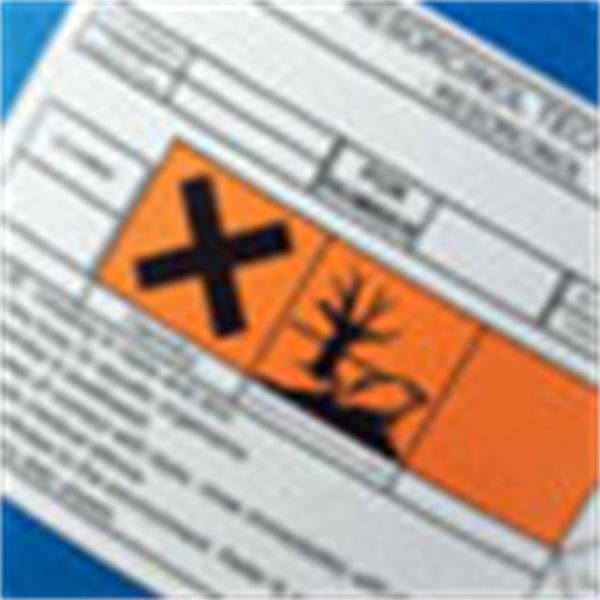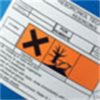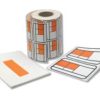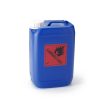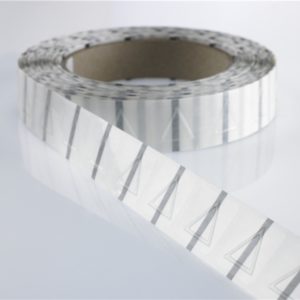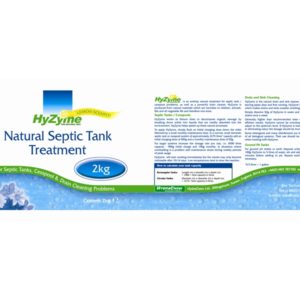BS5609 Approved Labels
Home / Full Product Range / Chemical Labels / BS5609 Approved Labels
BS5609 Approved Labels FAQs
BS5609 is a British Standard that outlines the specifications and criteria for pressure-sensitive adhesive labels intended for marine use. This standard is particularly crucial for labels used on containers that transport hazardous goods by sea. The primary objective of BS5609 is to ensure that these labels can withstand the harsh marine environment, remaining both attached and legible even after prolonged exposure to seawater.
The BS5609 standard is comprehensive, addressing not just the adhesive’s durability but also the label material’s resilience. This is crucial because, in marine environments, both the label’s print and its attachment to the container are vital for safety and identification purposes.
Label Material
Durability: The material of the label must be able to withstand prolonged exposure to seawater, sunlight, and other harsh marine conditions without deteriorating or fading. This ensures that the information printed on the label remains legible even after months at sea.
Resistance to Abrasion: Given that containers can come into contact with various surfaces during transportation, the label material must resist abrasion. This ensures that the label doesn’t wear off easily when subjected to rough handling or contact with other objects.
UV Resistance: The label material should not fade or become illegible when exposed to sunlight for extended periods.
Adhesive
Marine Resilience: The adhesive used on the label must ensure that the label remains firmly attached to the container, even after being submerged in seawater for extended periods. This is a critical requirement, especially for containers that might fall overboard.
Temperature Resistance: Given the varying temperatures that marine shipments can be exposed to, the adhesive should remain effective across a range of temperatures.
1. Safety in Marine Transport
BS5609 compliance ensures the clear identification of hazardous materials during marine transport. Given the challenging marine conditions, such as exposure to saltwater, UV radiation, and potential abrasion, it’s vital that labels remain legible. This ensures that if a container falls overboard or leaks, the contents can be quickly identified, allowing for immediate safety measures.
2.Environmental Protection
Environmental protection is at the forefront of BS5609 standards. Durable and legible labels help in the quick identification of container contents in case of spills or leaks, leading to faster response times and mitigation of environmental damage. Adhering to these standards showcases a shipping company’s commitment to responsible and eco-friendly practices.
3. Regulatory Adherence
BS5609 compliance ensures that shipping companies meet international regulations, such as the International Maritime Dangerous Goods (IMDG) code. By adhering to these standards, companies not only avoid potential legal complications and fines but also enhance their reputation, building trust with stakeholders.
4. Economic Implications
From an economic standpoint, BS5609 compliant labels offer dual benefits. Firstly, they help companies avoid fines and penalties associated with non-compliance. Secondly, the durability of these labels reduces the need for frequent replacements, leading to long-term cost savings.
The Merchant Shipping Act is a comprehensive piece of legislation that governs maritime transport in the United Kingdom. It covers a wide range of topics related to shipping, including the safety of vessels, the welfare of seafarers, the transportation of goods, and the prevention of marine pollution.
Incorporation of BS5609:
Within the framework of the Merchant Shipping Act, there’s an emphasis on the safe transportation of hazardous goods, especially when these are transported by sea. Given the potential risks associated with marine transport, especially in the case of accidents or containers falling overboard, it’s crucial that such containers are clearly and durably labelled.
BS5609 comes into play as a recognized standard for the durability and legibility of labels used on containers carrying hazardous materials. The act references BS5609 to ensure that labels on these containers can withstand the harsh marine environment, including prolonged exposure to seawater, UV radiation, and potential abrasion. In essence, by incorporating BS5609, the Merchant Shipping Act ensures that vital information on containers remains accessible, promoting safety and compliance in marine transport.
The IMDG Code is an international guideline for the safe transportation of dangerous goods by sea. It emphasizes the importance of proper labelling and packaging to ensure the safety of maritime transport. BS5609 compliance is often referenced in the IMDG Code, especially when discussing the durability and legibility of labels for containers carrying hazardous materials.
Significance of BS5609 in IMDG:
BS5609 compliant labels ensure that containers transporting hazardous goods by sea have labels that can withstand harsh marine environments. This is crucial for the IMDG Code, which prioritizes the safety of maritime transport and the prevention of environmental hazards.
Given its focus on the durability of labels in marine environments, BS5609 affects several industries, especially those involved in the production, handling, transport, and storage of hazardous materials that might be shipped by sea. Here are the primary industries affected:
Chemical Industry: Companies that manufacture, handle, or transport chemicals, especially hazardous ones, need to ensure that their labels remain legible and intact during marine transport. This includes producers of industrial chemicals, agrochemicals, petrochemicals, and more.
Oil and Gas Industry: This industry often transports flammable and hazardous materials by sea. Proper labelling that can withstand marine conditions is crucial.
Shipping and Logistics: Companies involved in the shipping and transport of goods by sea, especially those that handle hazardous materials, need to ensure that the labels on containers and drums meet BS5609 standards.
Waste Management: Companies involved in the disposal or recycling of hazardous waste that is transported by sea need to ensure their containers are labelled according to the standard.
Agriculture: Pesticides, fertilisers, and other agrochemicals that are classified as hazardous and are shipped by sea would require BS5609 compliant labels.
Paints and Coatings Industry: Many paints, solvents, and coatings are flammable or hazardous. If they are transported by sea, their containers need durable labels.
Mining and Metallurgy: Some mined materials and by-products can be hazardous and, if transported by sea, would require durable labelling.
Pharmaceuticals: Whilst many pharmaceuticals are not hazardous, some can be, especially in bulk quantities. If they are shipped by sea, they would need compliant labelling.
Scope: The testing process is divided into two main sections. Section 2 pertains to the adhesive performance of the label, while Section 3 focuses on the print permanence.
Section 2 – Adhesive Performance:
Immersion Test: Labels are applied to standard steel panels and then immersed in seawater for a period of three months at a depth of 1 metre. After this period, they should remain adhered and legible.
Adhesion Test After Immersion: After the immersion test, the labels are checked for adhesion strength. They should not peel or detach from the steel panels.
Low Temperature Adhesion: This test ensures that the labels can adhere to surfaces at low temperatures, typically around -20°C.
Section 3 – Print Permanence:
Abrasion Resistance: The printed labels are subjected to abrasion to ensure that the print remains legible after potential scuffing or wear.
Exposure to Sunlight: Labels are exposed to ultraviolet (UV) light to simulate prolonged exposure to sunlight. The print should remain legible and not fade significantly.
Exposure to Salt Spray: This test simulates the corrosive effects of saltwater spray. The print on the labels should remain clear and legible after this test.
Immersion in Seawater: Similar to the adhesive performance test, the printed labels are immersed in seawater to ensure the print does not fade or wash away.
Certification: If the labels pass all the above tests, they are deemed BS5609 compliant. Manufacturers can then certify their labels as meeting the standard.
Periodic Re-testing: To maintain compliance, periodic re-testing might be required, especially if there are changes in the label materials or printing methods.
BS5609 Approved Labels FAQs
BS5609 is a British Standard that outlines the specifications and criteria for pressure-sensitive adhesive labels intended for marine use. This standard is particularly crucial for labels used on containers that transport hazardous goods by sea. The primary objective of BS5609 is to ensure that these labels can withstand the harsh marine environment, remaining both attached and legible even after prolonged exposure to seawater.
The BS5609 standard is comprehensive, addressing not just the adhesive’s durability but also the label material’s resilience. This is crucial because, in marine environments, both the label’s print and its attachment to the container are vital for safety and identification purposes.
Label Material
Durability: The material of the label must be able to withstand prolonged exposure to seawater, sunlight, and other harsh marine conditions without deteriorating or fading. This ensures that the information printed on the label remains legible even after months at sea.
Resistance to Abrasion: Given that containers can come into contact with various surfaces during transportation, the label material must resist abrasion. This ensures that the label doesn’t wear off easily when subjected to rough handling or contact with other objects.
UV Resistance: The label material should not fade or become illegible when exposed to sunlight for extended periods.
Adhesive
Marine Resilience: The adhesive used on the label must ensure that the label remains firmly attached to the container, even after being submerged in seawater for extended periods. This is a critical requirement, especially for containers that might fall overboard.
Temperature Resistance: Given the varying temperatures that marine shipments can be exposed to, the adhesive should remain effective across a range of temperatures.
1. Safety in Marine Transport
BS5609 compliance ensures the clear identification of hazardous materials during marine transport. Given the challenging marine conditions, such as exposure to saltwater, UV radiation, and potential abrasion, it’s vital that labels remain legible. This ensures that if a container falls overboard or leaks, the contents can be quickly identified, allowing for immediate safety measures.
2.Environmental Protection
Environmental protection is at the forefront of BS5609 standards. Durable and legible labels help in the quick identification of container contents in case of spills or leaks, leading to faster response times and mitigation of environmental damage. Adhering to these standards showcases a shipping company’s commitment to responsible and eco-friendly practices.
3. Regulatory Adherence
BS5609 compliance ensures that shipping companies meet international regulations, such as the International Maritime Dangerous Goods (IMDG) code. By adhering to these standards, companies not only avoid potential legal complications and fines but also enhance their reputation, building trust with stakeholders.
4. Economic Implications
From an economic standpoint, BS5609 compliant labels offer dual benefits. Firstly, they help companies avoid fines and penalties associated with non-compliance. Secondly, the durability of these labels reduces the need for frequent replacements, leading to long-term cost savings.
The Merchant Shipping Act is a comprehensive piece of legislation that governs maritime transport in the United Kingdom. It covers a wide range of topics related to shipping, including the safety of vessels, the welfare of seafarers, the transportation of goods, and the prevention of marine pollution.
Incorporation of BS5609:
Within the framework of the Merchant Shipping Act, there’s an emphasis on the safe transportation of hazardous goods, especially when these are transported by sea. Given the potential risks associated with marine transport, especially in the case of accidents or containers falling overboard, it’s crucial that such containers are clearly and durably labelled.
BS5609 comes into play as a recognized standard for the durability and legibility of labels used on containers carrying hazardous materials. The act references BS5609 to ensure that labels on these containers can withstand the harsh marine environment, including prolonged exposure to seawater, UV radiation, and potential abrasion. In essence, by incorporating BS5609, the Merchant Shipping Act ensures that vital information on containers remains accessible, promoting safety and compliance in marine transport.
The IMDG Code is an international guideline for the safe transportation of dangerous goods by sea. It emphasizes the importance of proper labelling and packaging to ensure the safety of maritime transport. BS5609 compliance is often referenced in the IMDG Code, especially when discussing the durability and legibility of labels for containers carrying hazardous materials.
Significance of BS5609 in IMDG:
BS5609 compliant labels ensure that containers transporting hazardous goods by sea have labels that can withstand harsh marine environments. This is crucial for the IMDG Code, which prioritizes the safety of maritime transport and the prevention of environmental hazards.
Given its focus on the durability of labels in marine environments, BS5609 affects several industries, especially those involved in the production, handling, transport, and storage of hazardous materials that might be shipped by sea. Here are the primary industries affected:
Chemical Industry: Companies that manufacture, handle, or transport chemicals, especially hazardous ones, need to ensure that their labels remain legible and intact during marine transport. This includes producers of industrial chemicals, agrochemicals, petrochemicals, and more.
Oil and Gas Industry: This industry often transports flammable and hazardous materials by sea. Proper labelling that can withstand marine conditions is crucial.
Shipping and Logistics: Companies involved in the shipping and transport of goods by sea, especially those that handle hazardous materials, need to ensure that the labels on containers and drums meet BS5609 standards.
Waste Management: Companies involved in the disposal or recycling of hazardous waste that is transported by sea need to ensure their containers are labelled according to the standard.
Agriculture: Pesticides, fertilisers, and other agrochemicals that are classified as hazardous and are shipped by sea would require BS5609 compliant labels.
Paints and Coatings Industry: Many paints, solvents, and coatings are flammable or hazardous. If they are transported by sea, their containers need durable labels.
Mining and Metallurgy: Some mined materials and by-products can be hazardous and, if transported by sea, would require durable labelling.
Pharmaceuticals: Whilst many pharmaceuticals are not hazardous, some can be, especially in bulk quantities. If they are shipped by sea, they would need compliant labelling.
Scope: The testing process is divided into two main sections. Section 2 pertains to the adhesive performance of the label, while Section 3 focuses on the print permanence.
Section 2 – Adhesive Performance:
Immersion Test: Labels are applied to standard steel panels and then immersed in seawater for a period of three months at a depth of 1 metre. After this period, they should remain adhered and legible.
Adhesion Test After Immersion: After the immersion test, the labels are checked for adhesion strength. They should not peel or detach from the steel panels.
Low Temperature Adhesion: This test ensures that the labels can adhere to surfaces at low temperatures, typically around -20°C.
Section 3 – Print Permanence:
Abrasion Resistance: The printed labels are subjected to abrasion to ensure that the print remains legible after potential scuffing or wear.
Exposure to Sunlight: Labels are exposed to ultraviolet (UV) light to simulate prolonged exposure to sunlight. The print should remain legible and not fade significantly.
Exposure to Salt Spray: This test simulates the corrosive effects of saltwater spray. The print on the labels should remain clear and legible after this test.
Immersion in Seawater: Similar to the adhesive performance test, the printed labels are immersed in seawater to ensure the print does not fade or wash away.
Certification: If the labels pass all the above tests, they are deemed BS5609 compliant. Manufacturers can then certify their labels as meeting the standard.
Periodic Re-testing: To maintain compliance, periodic re-testing might be required, especially if there are changes in the label materials or printing methods.


